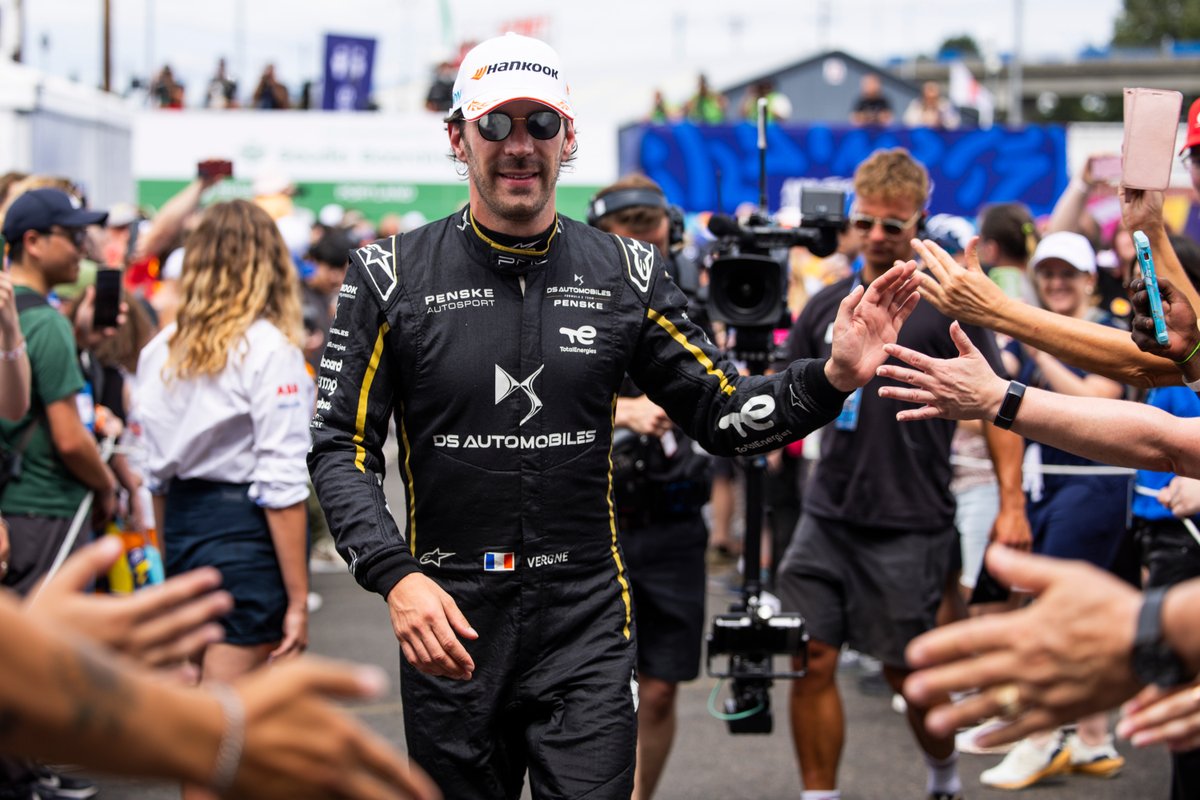
DS PENSKE COMPLETES SUCCESSFUL FORMULA E PORTLAND DOUBLE-HEADER
The track conditions on Sunday morning were a little different from the day before. After the first race, it rained. So, in the early hours of the day, the thermometer read just 16°C. The practice session was cautious, but the grip was relatively good. The two DS E-TENSE FE23s remained on the sidelines during the first half of the session, but raised their game as the session drew to a close.
A yellow flag at Turn 11, indicating an abnormally slippery surface, prompted the whole grid to adopt a wiser approach. At 9.40am local time, the first group took to the track for qualifying. Vergne took part, and this time the two-time champion found a clear lap. He qualified for the quarter-finals by setting the second fastest time in his group, just 12 thousandths off Robin Frijns' Envision. Later, Stoffel Vandoorne showed how well his DS E-TENSE FE23 was performing by finishing fifth in his group, just a tenth of a second behind Pascal Wehrlein's Porsche.
Vergne put in a very good lap against Nick Cassidy's Jaguar to qualify for the semi-finals. The French driver then found himself up against Frijns, whom he overcame to reach the final. This time it was Antonio Felix Da Costa, the previous day's winner, who showed his opposition. The two men had already met four times in the same configuration, three times in favour of the French driver. At the end of the final, Vergne took his 17th pole position in Formula E, becoming the discipline's record holder in the process.
"I believed in it right up to the last bend, I really gave it my all on that lap," he said. "Now we're going to have to run an intelligent race in order to score as many points as possible for the team.
Stoffel Vandoorne, DS Penske, DS E-Tense FE23
Photo by: DPPI
The art of managing energy
The race is scheduled on the basis of one lap less than the previous day. And with 26 laps rather than 27, the energy strategy, aided by the data collected the day before, is quite different. The race began with more pace and a pitched battle in the pack. While Vergne managed to hold onto a place at the front, the other DS Penske of Vandoorne, was just outside the top 10. On this type of very fast circuit, overtaking is very common and the energetic nature of the track means that positions are constantly changing.
In four laps, there have already been 4 changes of leader. The secret to trying to win is to stay in the top three to save energy and take the lead at the right moment. It's also possible to try and make a breakaway, at the risk of being caught out because of a lack of battery power, or the intervention of a safety car to close the gap. This is exactly what happened with less than 10 laps to go, in order to clear debris from the track.
The race was then extended by one lap, which disrupted the energy strategies of the leaders. The finish highlighted the performances of the Porsches and Jaguars, as well as Vergne's DS Penske, which crossed the line in fifth position. As always since the start of the season, DS Automobiles remains the only manufacturer capable of overshadowing the German and British factory teams.
The next Formula E races will take place on 20-21 July in London.
2024-07-01T10:22:09Z dg43tfdfdgfd